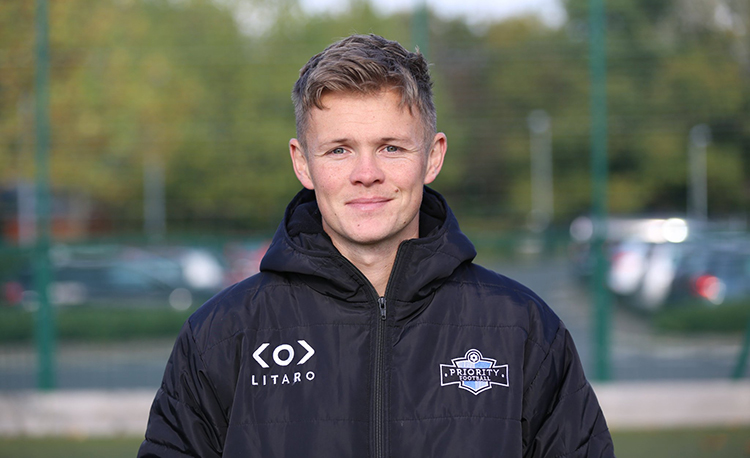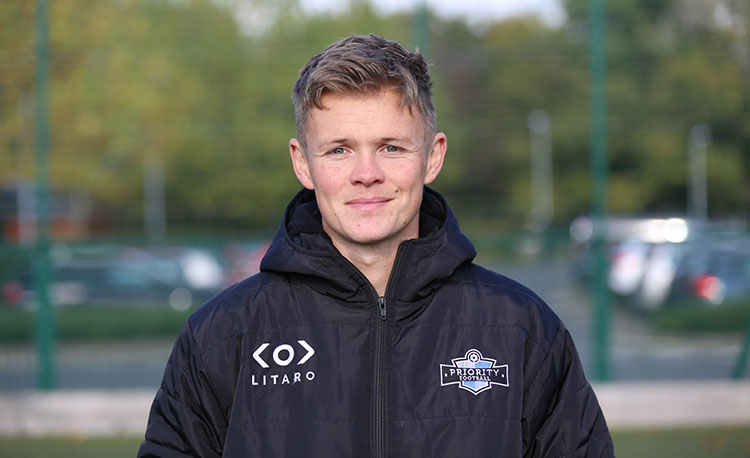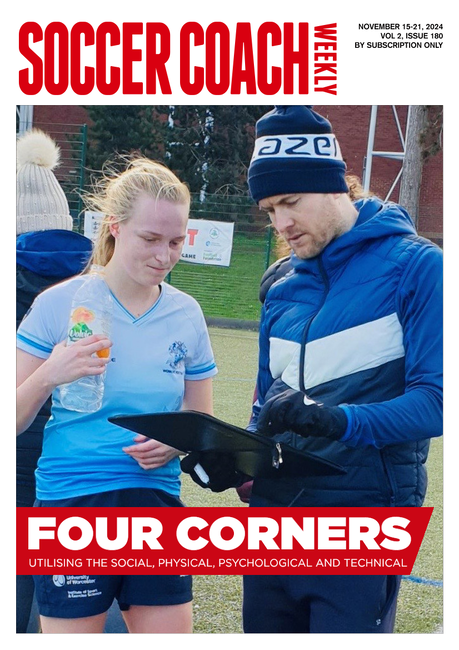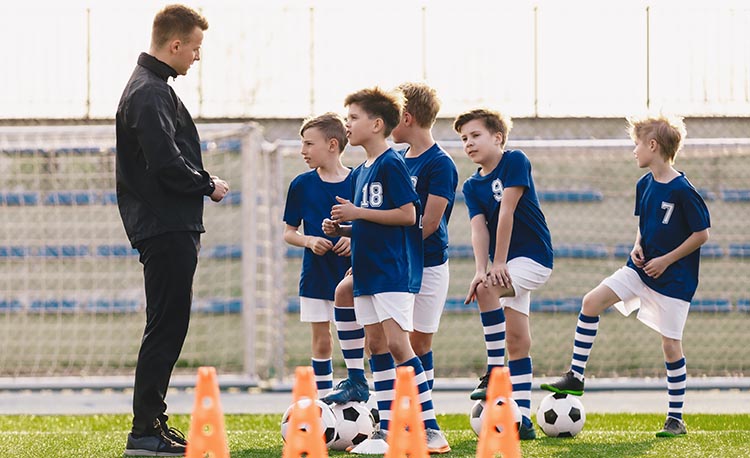'The game speaks to the players, not me'
The head of coaching at a private academy, ADAM DAVIDSON gives his players a huge say in the design of their sessions. STEPH FAIRBAIRN finds out more...
In 2020, Adam Davidson returned to the UK from Australia.
The pandemic made sponsorship and visas difficult, meaning he couldn’t stay in a country where he had spent the previous five years working various roles, such as youth technical director at Dunbar Rovers FC.
Adam has since been appointed head of coaching at Priority Football Academy, based in Bristol, England. He has been there for more than a year, initially taking on the role of lead coach and performance analyst.
His coaching experiences and Masters degree in sports performance analysis mean Adam has always had a fascination with session design.
SCW caught up with him to talk about something he has been trying recently - co-designing sessions with his players…
SCW: Firstly, what have you learned from the different places you’ve coached in?
AD: "I’ve changed massively as a coach. When I first started, I had a player’s mentality as a coach. I liked to think I was focused on development, but I was more focused on being competitive and winning.
“I’ve sort of come full circle now. I am very much an advocate of a constraints-led approach in terms of manipulating the task a little bit, creating the environment for players to learn and trying to give them a bit more responsibility rather than them looking at me for answers and for advice on every single aspect of the game.
"It’s more about presenting them with problems and that they’re repeating the process of solving a problem and finding a solution. That’s probably my biggest change in how I coach.”
SCW: You have been trying to co-design sessions with players. What made you want to do that?
AD: “It was something we just did, because I got on well with the players and we had that kind of relationship where we bounced ideas off each other. If they liked it, I’d say, ’what do you want to change about it?’.
“I read a few papers. One of them, by Sam Robertson and Carl Woods, was called ’Learning by Design’, about what sports coaches can learn from video game designs.
"They talk about co-design and how video games allow the person playing to customise it and give them control of the environment they are in.
"It’s rewarding when, three or four months on, you start to see intelligent players..."
"One principle I found really interesting was the control of feedback and help.
"When you play a video game, you get to choose whether you do the tutorial or not. I sort of changed how I guide and give feedback to players. I try to give them the option of ’If you need me, I’m here’.
"I’ll speak to them in certain moments when I think they need it, but for the most part, they’re in control of how much or how little help they get from me.
"That was difficult at first. But as I’ve learned to be more patient in their development journey, it’s massively rewarding when, three or four months down the line, you start to see intelligent performers - not just kids who are doing what coaches are telling them to do.
‘It’s been so interesting, having that journey with them and having a framework to work off.
"Session design is something that has always interested me because I much prefer it when the game speaks to the players rather than when I speak to them.
"So if I can design a task that encourages them to do a particular thing, or guides them to try something, I’ll do that rather than telling them to do it.
"It’s changed how I intervene in a session. For example, if you have a goalkeeper who stays rooted to their line, or we’re playing a game and there are no goalkeepers and you have someone who is just staying back to block the goal, you could change the rules of the game to encourage them out of that zone by having thirds and saying ’if your team scores, the goal doesn’t count if any of your players are in the back third’.
"So now, without telling them ’stop being on the line’ - because it rarely works - you’ve created rules to encourage them to be more connected to the rest of the game.”
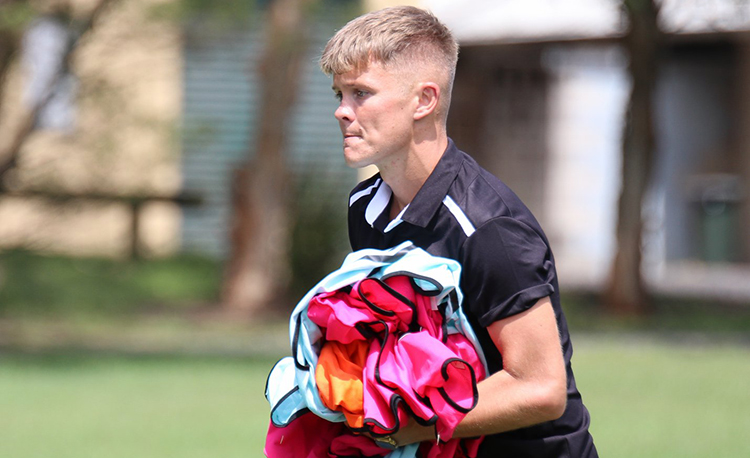
SCW: Have you been surprised by some of the ideas your players have come up with?
AD: "It’s more appropriate for them to interject in certain sections than others. For example, this week is games week for us.
"I saw a session online that Jake Sainsbury did at Bristol Rovers - they had playing cards and different superpowers attached to them.
"So when we picked the teams, I said, ’your captain picks a card’, and one of them was a VAR card. So when they played, if someone scored against them, on one occasion they could reverse the decision, no matter what. That was a fun little element to have.
"Then we got talking about what other superpowers you can have. They asked ’If someone’s scoring too much, can we handcuff them?’!
"That’s not very good for that player so I thought how could we make it slightly better? And I said, ’What about a ’handcuff hero’ card?, so if you handcuff that player, they can’t score - but if they assist someone it counts as two. So the next week, we created that card.
"It builds over time. It takes a little bit of note-taking. I tend to type them up and have a little store online of the things I’ve done that are really versatile and work really well.
"I think versatile is the key thing because if I can use it with multiple age groups, then I try to keep it and use it a lot.”
SCW: What have you seen from your players in terms of their growth?
AD: "I’ve noticed that they become more self-organising - they don’t rely on me to do things so much.
"The way I think of it is, I’m like the older kid who knows loads of games that are cool to play, and all I’m doing is letting them take the reins for it.
"It can be tough at first. It can be a bit slow and messy, but that’s what learning looks like. If it’s not pleasantly frustrating for them, then you’re not in the right spot.”
SCW: If there are any coaches looking to try co-designing sessions, what would your advice to them be?
AD: "My advice is, just because you’re co designing and getting their feedback, it’s not permission to give them a lecture and start a five-minute conversation about it.
"I’m like the older kid who knows loads of games and I’m letting them take the reins..."
"It might be a little comment here and there. You don’t need to stop the game, you can just pull someone to the side and have a chat - ’hey, that was class what you did there. What if we tweak it this way?’.
Don’t ask questions like, ’What do you think we should add?’ because they’re not going to give you an answer.
Try to give them some ideas and then they’ll have a think about it and come back at you with something.
“I’ll give you an example. A four-goal game is quite a common one to play - 3v3, two goals at both ends, spread wide apart.
"What we normally do is have a gate in the middle, encouraging them to switch play and also recognising the moment to drive through the middle.
"What we found in a lot of games is our boys try to narrow their attack too quickly. I talked to them about the position of the goals, and asked ’What do you think we could do with the goals to encourage us to use those wide areas more?’.
“We put the goals back-to-back facing the sidelines. We said if you score from your first or second touch, it’s worth double.
"Then there was a line that runs down the middle, dissecting those two goals. We said if you assist by crossing the midline, and you score, it’s worth three.
"You had many more combinations in wide areas, you’re working on cutbacks, crossing across the box, things like that.
"We developed it from there and turned almost diagonal, facing out and a bit more, so it became a bit more realistic. Then eventually, we pushed them back and spread them a little bit.
“That to me was amazing. We’d co-designed a game that gets out of it what I couldn’t get out of it by designing it myself."
Related Files
Newsletter Sign Up
Coaches Testimonials

Gerald Kearney, Downtown Las Vegas Soccer Club

Paul Butler, Florida, USA

Rick Shields, Springboro, USA

Tony Green, Pierrefonds Titans, Quebec, Canada
Subscribe Today
Discover the simple way to become a more effective, more successful soccer coach
In a recent survey 89% of subscribers said Soccer Coach Weekly makes them more confident, 91% said Soccer Coach Weekly makes them a more effective coach and 93% said Soccer Coach Weekly makes them more inspired.
*includes 3 coaching manuals
Get Weekly Inspiration
All the latest techniques and approaches
Soccer Coach Weekly offers proven and easy to use soccer drills, coaching sessions, practice plans, small-sided games, warm-ups, training tips and advice.
We've been at the cutting edge of soccer coaching since we launched in 2007, creating resources for the grassroots youth coach, following best practice from around the world and insights from the professional game.
